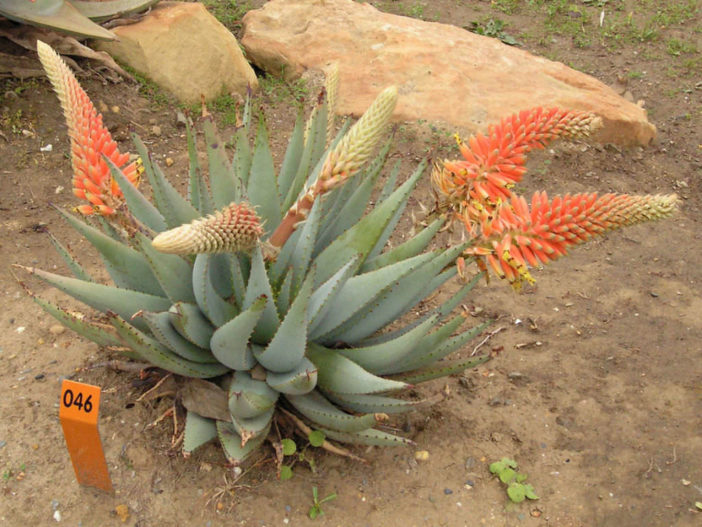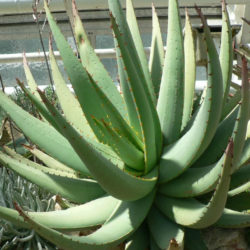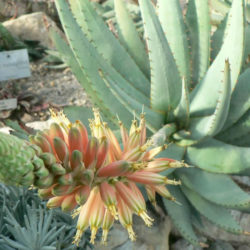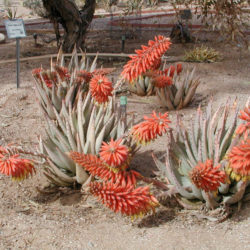Scientific Name
Aloe claviflora Burch.
Common Name(s)
Cannon Aloe, Jackal's Tail Aloe, Kraal Aloe
Synonym(s)
Aloe decora, Aloe schlechteri
Scientific Classification
Family: Asphodelaceae
Subfamily: Asphodeloideae
Genus: Aloe
Description
Aloe claviflora is a succulent plant that forms dense clumps of usually stemless rosettes of grey-green leaves with sharp brown spines along the marines and a few along the tip of the keel. The rosettes are up to 10 inches (25 cm) in diameter, not erect, but facing outwards. Leaves are somewhat sickle-shaped, up to 8 inches (20 cm) long and 2.4 inches (6 cm) broad.
Flowers are bright red, yellowing with age, and appear in dense, almost horizontal, usually unbranched, cylindrical racemes in spring. They are club-shaped and up to 1.6 inches (4 cm) long. Fruits are typical capsules with tiny, winged seeds. The inflorescences are up to 20 inches (50 cm) long, with a stout, up to 12 inches (30 cm) long peduncle below the raceme.
Origin
Aloe claviflora is native to southern Namibia and South Africa (Northern Cape, Western Cape, Eastern Cape, western Free State, and near the brode of North West province). It occurs on calcrete, on the margins of Kalahari thornveld.

Hardiness
USDA hardiness zone 9b to 11b: from 25 °F (−3.9 °C) to 50 °F (+10 °C).
How to Grow and Care
Aloes are very forgiving plants. However, as with all succulents, Aloe must never be allowed to sit in stagnant water, and the plant should be carefully monitored to watch for signs of overwatering.
Aloes are not particularly fast-growing and will only rarely need repotting. Repot plants in the spring that are tipping over their pots or have ceased growing. Use a fast-draining potting mix with one-third of sand or pebbles. When repotting a larger plant, it is possible to divide the root ball carefully. Some kinds of Aloe will send off off-sets that can be potted independently.
It needs intense, bright light. They can withstand full summer sun once acclimated. In the winter, provide bright light. It prefers warmer temperatures of 70 to 80 °F (21 to 27 °C) but will survive down to 40 °F (4.5 °C). Feed with a cactus fertilizer in the summer only. Suspend feeding in the winter as the plant goes dormant.
See more at How to Grow and Care for Aloe.
Links
- Back to genus Aloe
- Succupedia: Browse succulents by Scientific Name, Common Name, Genus, Family, USDA Hardiness Zone, Origin, or cacti by Genus
Photo Gallery
Click on a photo to see a larger version.


